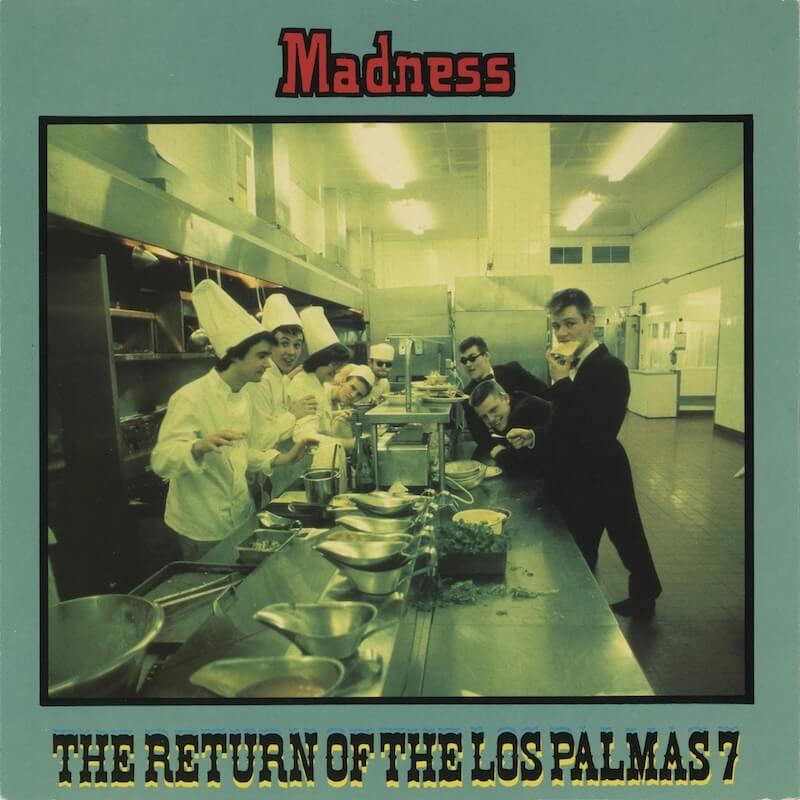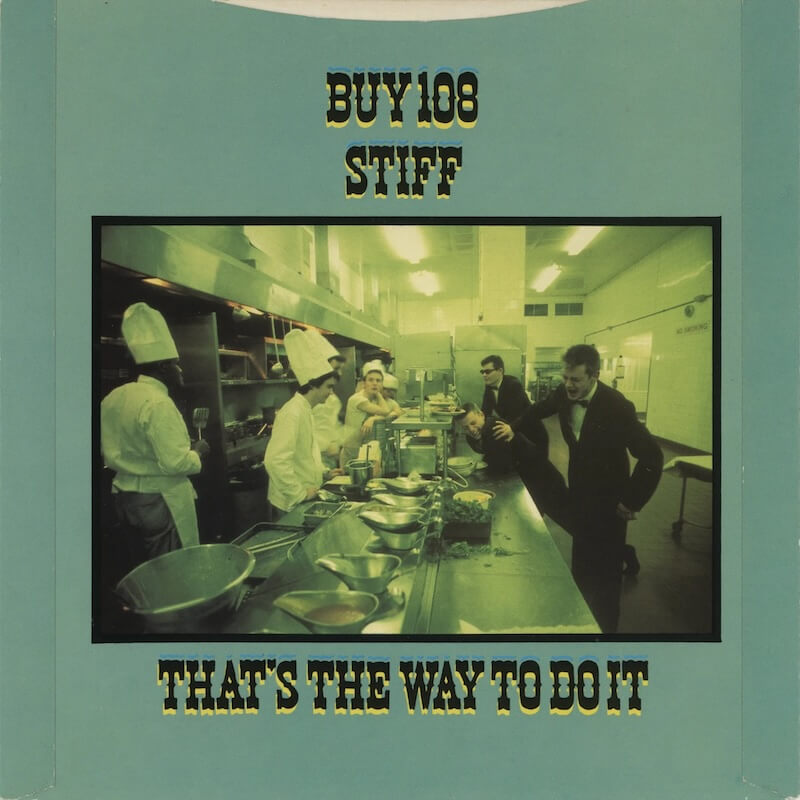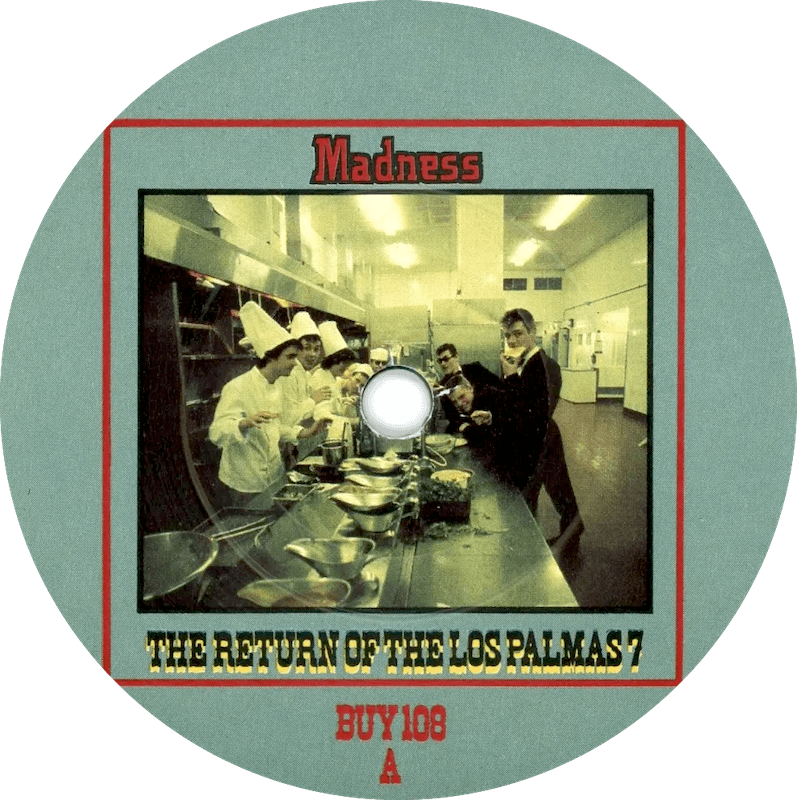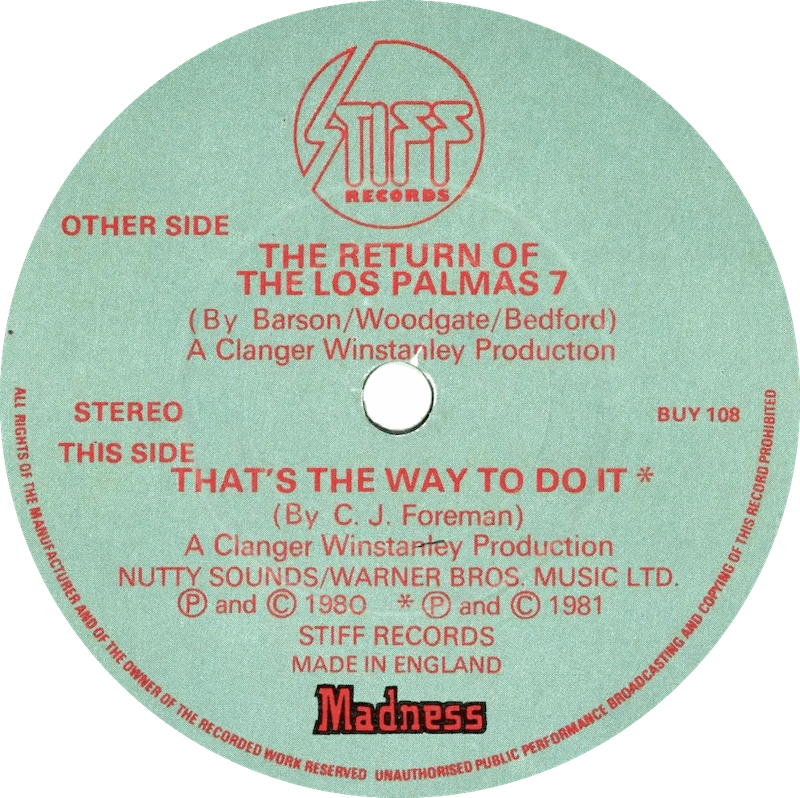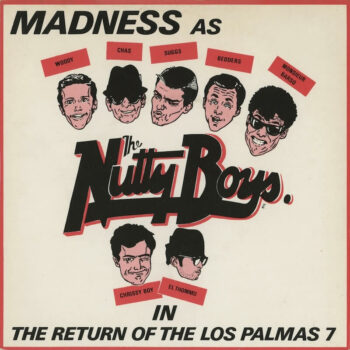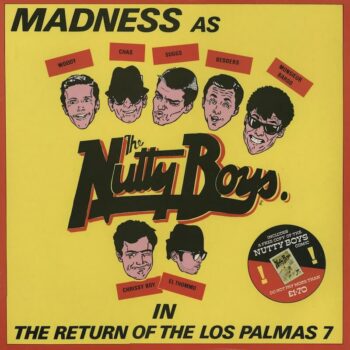
Return Of The Los Palmas 7
OVERVIEW
Released on January 16, 1981, The Return of the Los Palmas 7 marked one of the more unexpected turns in Madness’s early chart run—a largely instrumental track, brimming with whimsy and cinematic flair, that somehow stormed into the UK Top 10 and carved out a new dimension to the Nutty Boys’ identity. As the third and final single from their second album, Absolutely, it proved that the band’s appeal wasn’t confined to cheeky vocals or ska-pop choruses. They could make a hit without even saying much at all.
Though a version of the track had appeared on the Absolutely album, the single release was a more polished affair. Remixed and overdubbed with added brass and subtle touches, the title was now formally introduced as The Return of the Los Palmas 7—with the definitive article giving it a filmic, almost mysterious allure. Clocking in at 2 minutes and 33 seconds, it felt like the soundtrack to a daydream, drifting somewhere between a seaside café, a hotel lobby, and a surrealist sketch show.
What makes the track particularly notable is its sparseness in vocals. Beyond Chas Smash’s playful ad-libs in the intro, the barked “Waiter!” around the 42-second mark, and the final deadpan “Good night!”, the song is wordless—but far from lifeless. Built around Mike Barson’s loungey piano runs, swelling horns, and a strolling rhythm section, it’s sophisticated, oddball, and undeniably catchy.
The idea for the track came from Dave Robinson, head of Stiff Records, who had been impressed by the success of One Step Beyond…, another Madness instrumental. He encouraged the band to try it again, this time with the hopes of breaking into BBC Radio 2’s playlist and reaching an older, broader audience. His instincts proved correct—The Return of the Los Palmas 7 reached No. 7 on the UK Singles Chart and stayed in the Top 75 for 11 weeks.
The release of the single is also memorable for its quickly issued sleeve variations, both of which have become prized collector’s items. The first pressing came in a playful illustrated “comic” sleeve, designed in a bold, cartoon style and loosely inspired by American auto parts chain mascots (such as the Pep Boys). It captured the zany, offbeat character of the band and the track itself.
However, not long after release, Stiff Records issued a second sleeve—the so-called “canteen” version. This edition featured a photograph of the band dressed as cafeteria workers in a greasy spoon setting, complete with white coats and cutlery. The decision to swap the sleeve was likely motivated by a desire to appeal to a slightly older or more mainstream demographic, toning down the cartooniness in favour of a more grounded—but still cheeky—visual.
Both sleeves contained the exact same recording, but the artwork differences have made them a point of interest for collectors and completists. Overseas versions of the single also appeared with regional variations, including unique color treatments and different back covers, but it’s the UK comic and canteen sleeves that remain the most iconic.
Backing the A-side was “That’s The Way To Do It”, a lesser-known gem with roots in traditional British entertainment. Written by guitarist Chris Foreman, the track is a cockney knees-up in the classic music hall style—a bouncing piano number full of pub charm and working-class nostalgia. Its title is taken from the old Punch and Judy puppet catchphrase, and the lyrics serve as a humorous nod to Foreman’s own days as an “odd job man.”
In contrast to the A-side’s refined restraint, “That’s The Way To Do It” is brash, bold, and soaked in a kind of East End charisma. It perfectly demonstrates Madness’s ability to celebrate British culture not just through modern pop, but through the echoes of its past.
RELEASE DETAILS
TRACK LISTING
| Disc | Position | Track | Version | Duration |
|---|---|---|---|---|
| 1 | A1 | The Return of the Los Palmas 7 | 2:33 | |
| 1 | B1 | That's The Way To Do It | 2:51 |
CHART HISTORY
| Position Date | Position |
|---|---|
| 24/01/1981 | 38 |
| 31/01/1981 | 18 |
| 07/02/1981 | 14 |
| 14/02/1981 | 10 |
| 21/02/1981 | 7 |
| 28/02/1981 | 7 |
| 07/03/1981 | 10 |
| 14/03/1981 | 18 |
| 21/03/1981 | 27 |
| 28/03/1981 | 41 |
SEE RELATED RELEASES...
Explore the “Related Releases” section to discover rare and exclusive editions of this title — including Alternative Versions, Picture Discs, Deluxe Editions, Bonus Volumes, and Promotional Reissue Sets.
Each release offers something unique: unreleased tracks, bonus material, limited-edition artwork, and collectible packaging. Perfect for collectors and devoted fans, these editions deliver fresh listening experiences and one-of-a-kind treasures.
Alternatively, releases from different countries or re-issues from previous or future years will be grouped under our master release schedule, making them easily accessible and convenient for reference to all issues of the album. If available, a button to the master release will be displayed here.
MUSICANS
| Musican | Instrument | Role | Credit |
|---|---|---|---|
| Mike (Monsieur Barso) Barson | Piano, Organ, Vibraphone, Marimba, Harmonica | Band | |
| Chris (Chrissy Boy) Foreman | Guitar, Sitar, Slide Guitar | Band | |
| Lee (Kix) Thompson | Tenor Saxophone, Baritone Saxophone | Band | |
| Mark (Bedders) Bedford | Bass | Band | |
| Daniel (Woody) Woodgate | Drums | Band | |
| Graham (Suggs) McPherson | Vocals, Percussion | Band | |
| Cathal (Chas Smash) Smyth | Trumpet | Band |
PRODUCTION CREDITS
| Role | Credited | Notes |
|---|---|---|
| Producer | Clive Langer | |
| Producer | Alan Winstanley |
COPYRIGHT AND Licencing
| Ownership | Company | Notes |
|---|---|---|
| Copyright © | Stiff Records | |
| Phonographic Copyright ℗ | Stiff Records |
Representation
| Representation | Company | Notes |
|---|---|---|
| Record Label | Stiff Records | |
| Publisher | Nutty Sounds Ltd. | |
| Publisher | Warner Chappell Music Ltd. | |
| Recording Studio | Eden Studios |
SHARE YOUR OWN RELEASE REVIEW WITH OUR COMMUNITY
References
Extensive efforts have been made to gather factual information and knowledge on madness from various sources and document them. These sources include publicly accessible websites, books and publications, historical artefacts, and other pertinent materials. As a result, a comprehensive index of resources has been compiled and integrated into the website. These resources, if relevant to this article, are listed below.
| Reference | Source |
|---|---|
| wikipedia.org | Website |
| discogs.com | Website |
| officialcharts.com | Website |

